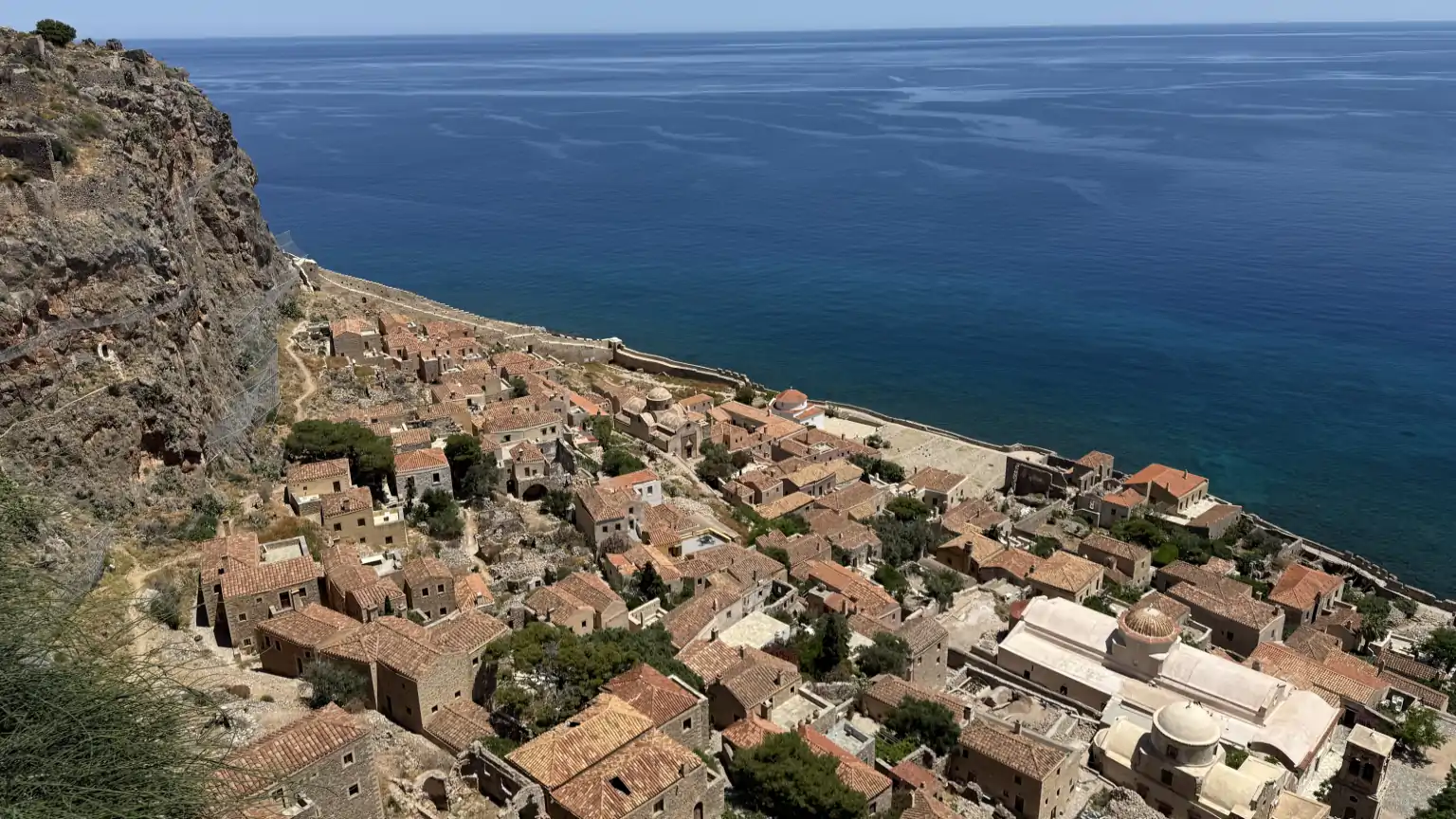Monemvasia
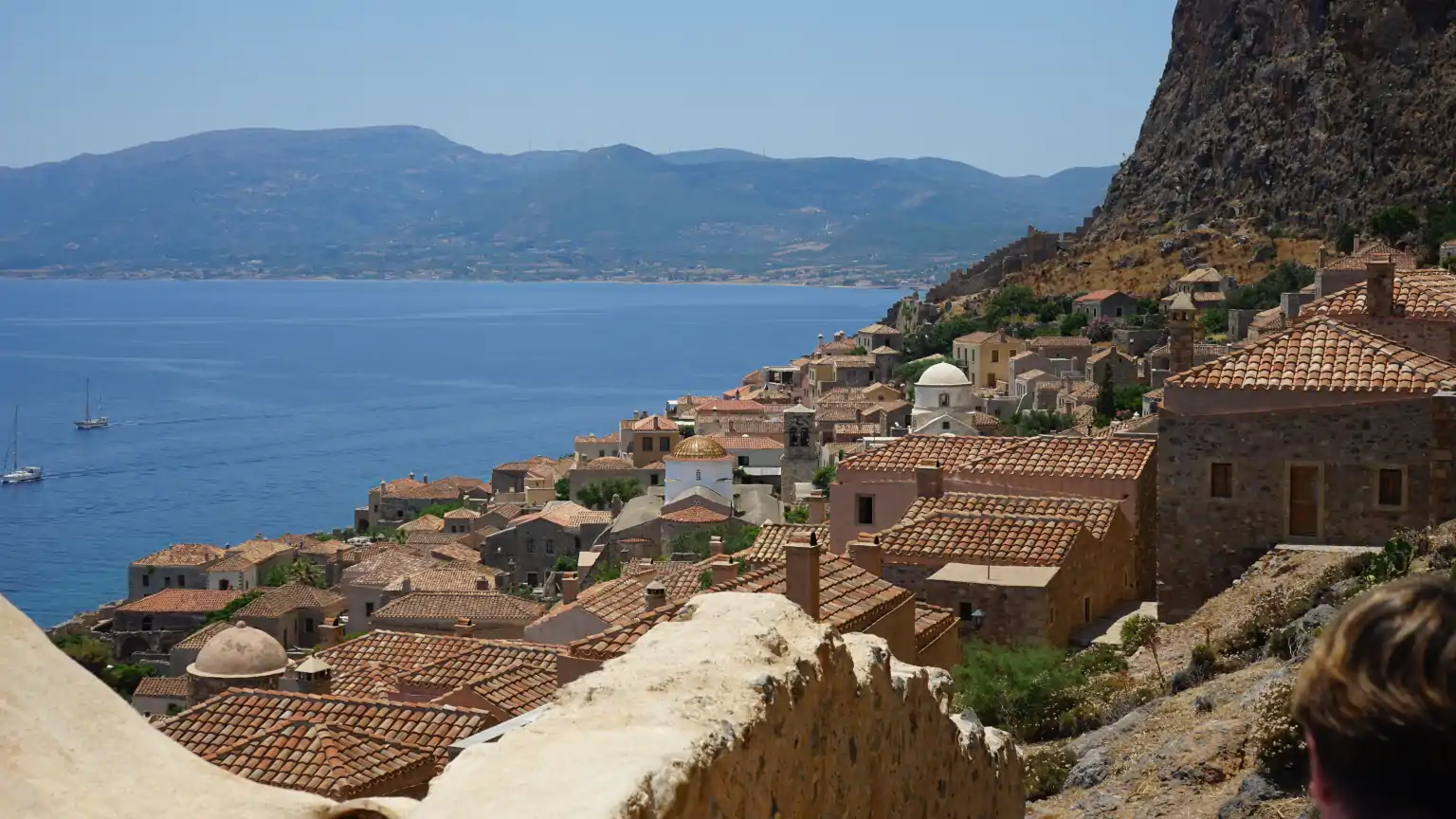
The Byzantine town of Monemvasia is located approximately 55 minutes by car from Villa Caretta in the south-east of the Peloponnese. Its inhabitants founded it in the 6th century on a rocky island. It consists of two parts: the lower town in the south of the island and the upper town on the rocky plateau about 180 metres higher up. The upper town can only be reached via winding paths.
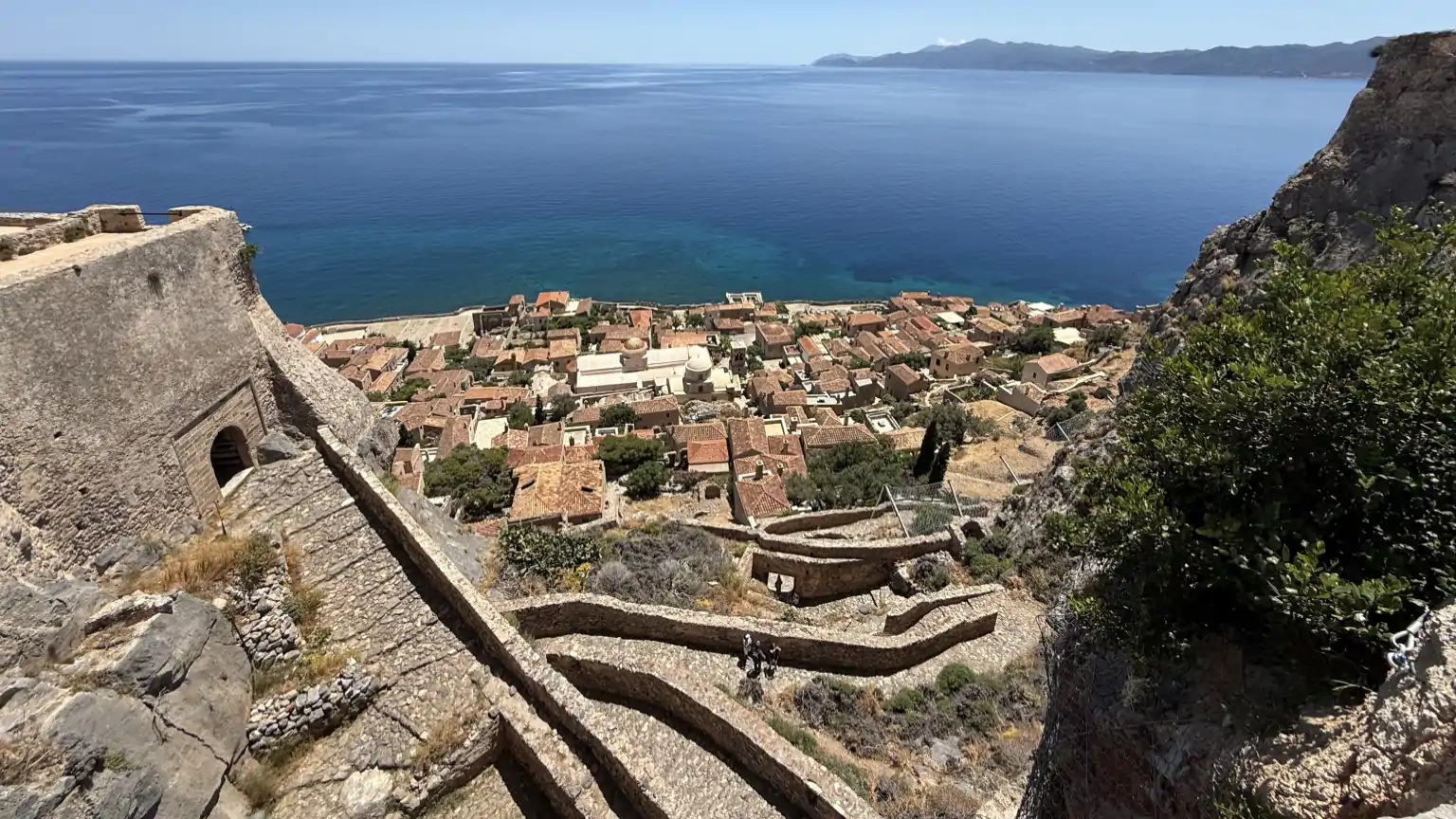
You will feel the medieval atmosphere in the Byzantine lower town with its city walls and many small alleyways. Numerous restaurants and cafés invite you to visit. The island is connected to the mainland by a road causeway.
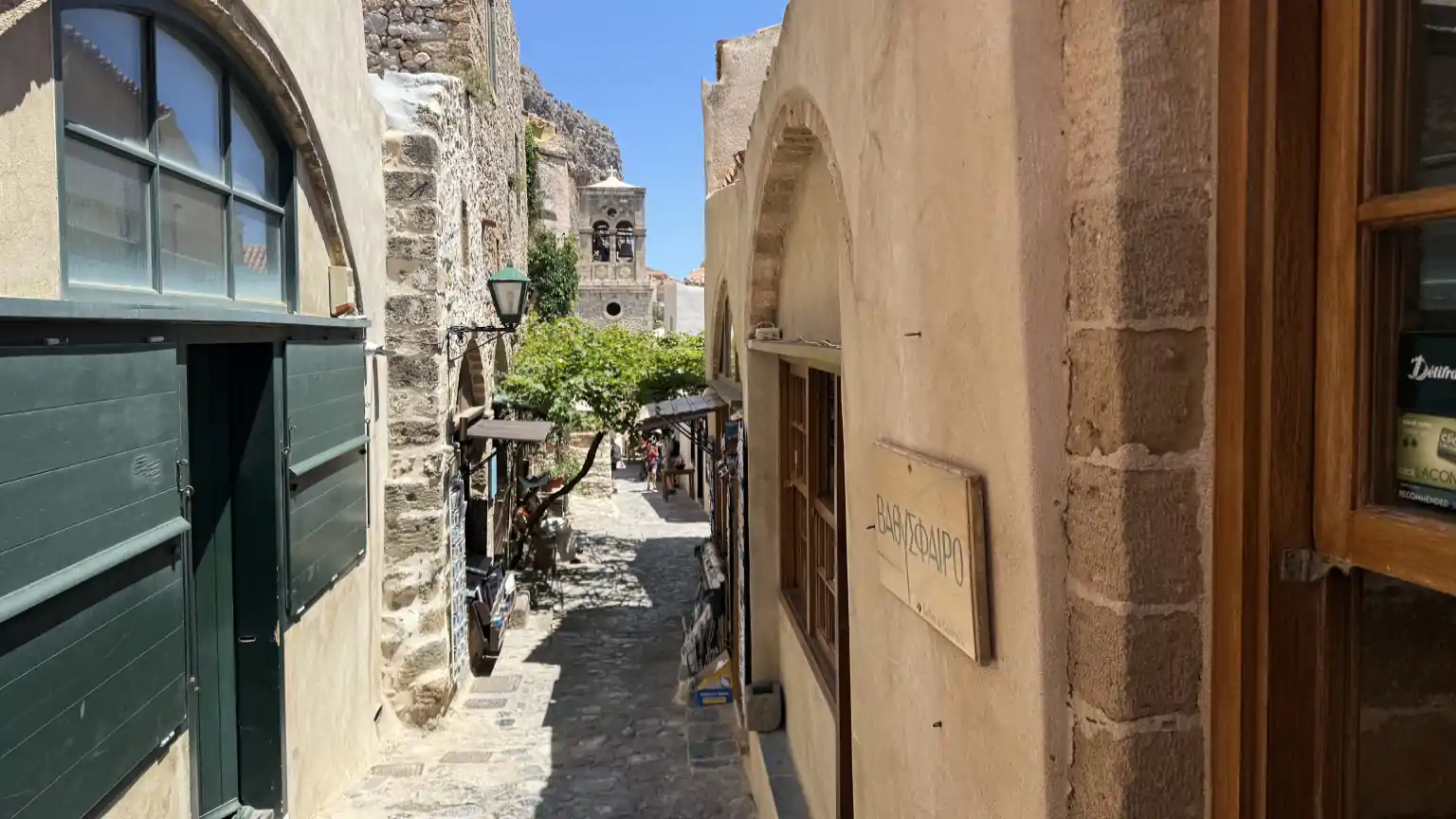
The town owes its name to its location; in Greek, moni emvasia (μόνη εμβασία) means “only entrance”. Until Greek independence in 1821-30, it was considered the ‘Gibraltar of the East’, as attempts to conquer it were fraught with great difficulties. The town of Monemvasia also gave its name to the Malvasia grape variety, which was exported from here.
Monemvasia was important for the safety of the sea route from Constantinople to Venice.
The fortress was considered impregnable for a long time and withstood numerous Arab sieges as well as the Norman conquest attempt of 1147. It is reported that there was a wheat field inside the citadel. Together with the numerous cisterns, it was sufficient to permanently feed a garrison of 30 men. The citadel was therefore self-sufficient and could be defended indefinitely.
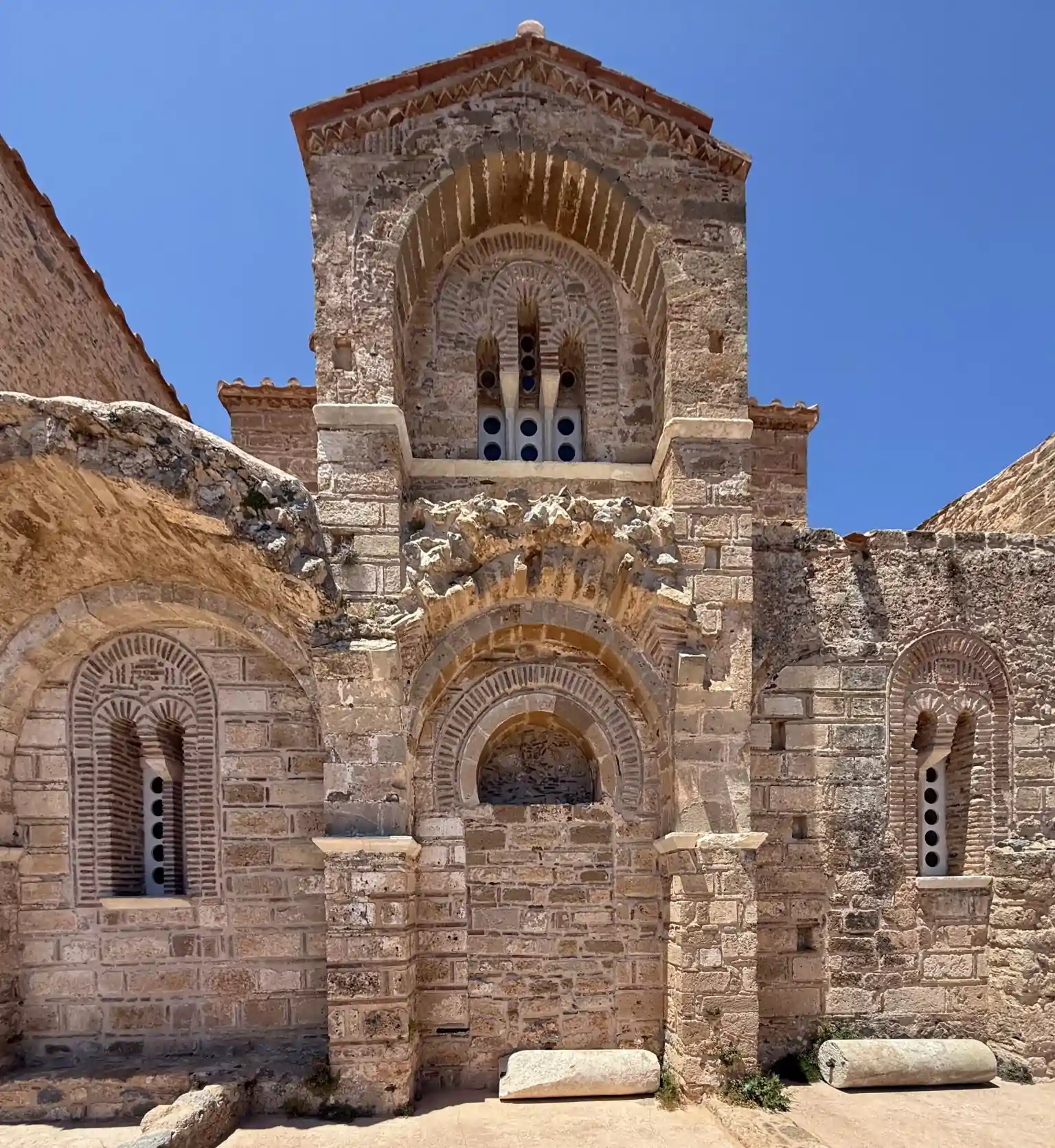
The town of Monemvasia has been awarded the European Heritage Label. In addition to the beauty of the city, the rock itself is also very picturesque, with colours that fluctuate between grey and red.
